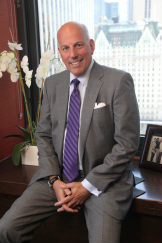Holiday Grind (con't)

Drs. Hindin and Gelb share some of the causes of teeth grinding and what people can do about it:
• 1 in 4 people with obstructive sleep apnea are bruxers: Like nighttime teeth grinding, people with sleep apnea are often unaware they have a problem, so if the grinding leads to a diagnosis of sleep apnea, it could save the person’s life. People with untreated sleep apnea can stop breathing hundreds of times a night. Those with severe cases are 46 percent more likely to die prematurely, according to a study published in 2009 in PLOS Medicine journal.
“Your doctor or dentist should explore the possibility of obstructive sleep apnea as a potential cause of your bruxism,” says Dr. Hindin.
• Caffeine, alcohol, cigarette smoking and hypertension are all linked to increased incidence of bruxism: People who have a drink before they go to bed and people who ingest caffeine are more likely to be teeth grinders, with the likelihood increasing the more a person consumes. Cigarette smoking and high blood pressure are also associated with teeth grinding, as are certain drugs used to treat depression.
• Nighttime dental guards are just one option for treatment: Depending on the cause of the bruxism, there are a variety of treatment options, ranging from dental guards to botox injections to anti-anxiety medications. “To effectively address the problem, the cause needs to be diagnosed if possible and treated,” says Dr. Gelb. “Bruxism can cause irreversible damage to your teeth, TMJ disorders and other problems and, as Dr. Hindin pointed out, it can be a sign of a more serious underlying problem, so it shouldn’t be ignored.”
But that doesn’t mean that everyone who grinds is in for a hefty medical bill. “For some people, treatment may be as simple as a $10 night guard purchased at the drug store – although a custom-fitted night guard is best.”
Dr. Michael Gelb is an innovator in TMJ disorders. He co-founded the Academy of Physiologic Medicine and Dentistry (APMD).
Dr. Howard Hindin specializes in cosmetic dentistry, temporomandibular joint disorders and craniofacial pain.
• 1 in 4 people with obstructive sleep apnea are bruxers: Like nighttime teeth grinding, people with sleep apnea are often unaware they have a problem, so if the grinding leads to a diagnosis of sleep apnea, it could save the person’s life. People with untreated sleep apnea can stop breathing hundreds of times a night. Those with severe cases are 46 percent more likely to die prematurely, according to a study published in 2009 in PLOS Medicine journal.
“Your doctor or dentist should explore the possibility of obstructive sleep apnea as a potential cause of your bruxism,” says Dr. Hindin.
• Caffeine, alcohol, cigarette smoking and hypertension are all linked to increased incidence of bruxism: People who have a drink before they go to bed and people who ingest caffeine are more likely to be teeth grinders, with the likelihood increasing the more a person consumes. Cigarette smoking and high blood pressure are also associated with teeth grinding, as are certain drugs used to treat depression.
• Nighttime dental guards are just one option for treatment: Depending on the cause of the bruxism, there are a variety of treatment options, ranging from dental guards to botox injections to anti-anxiety medications. “To effectively address the problem, the cause needs to be diagnosed if possible and treated,” says Dr. Gelb. “Bruxism can cause irreversible damage to your teeth, TMJ disorders and other problems and, as Dr. Hindin pointed out, it can be a sign of a more serious underlying problem, so it shouldn’t be ignored.”
But that doesn’t mean that everyone who grinds is in for a hefty medical bill. “For some people, treatment may be as simple as a $10 night guard purchased at the drug store – although a custom-fitted night guard is best.”
Dr. Michael Gelb is an innovator in TMJ disorders. He co-founded the Academy of Physiologic Medicine and Dentistry (APMD).
Dr. Howard Hindin specializes in cosmetic dentistry, temporomandibular joint disorders and craniofacial pain.
